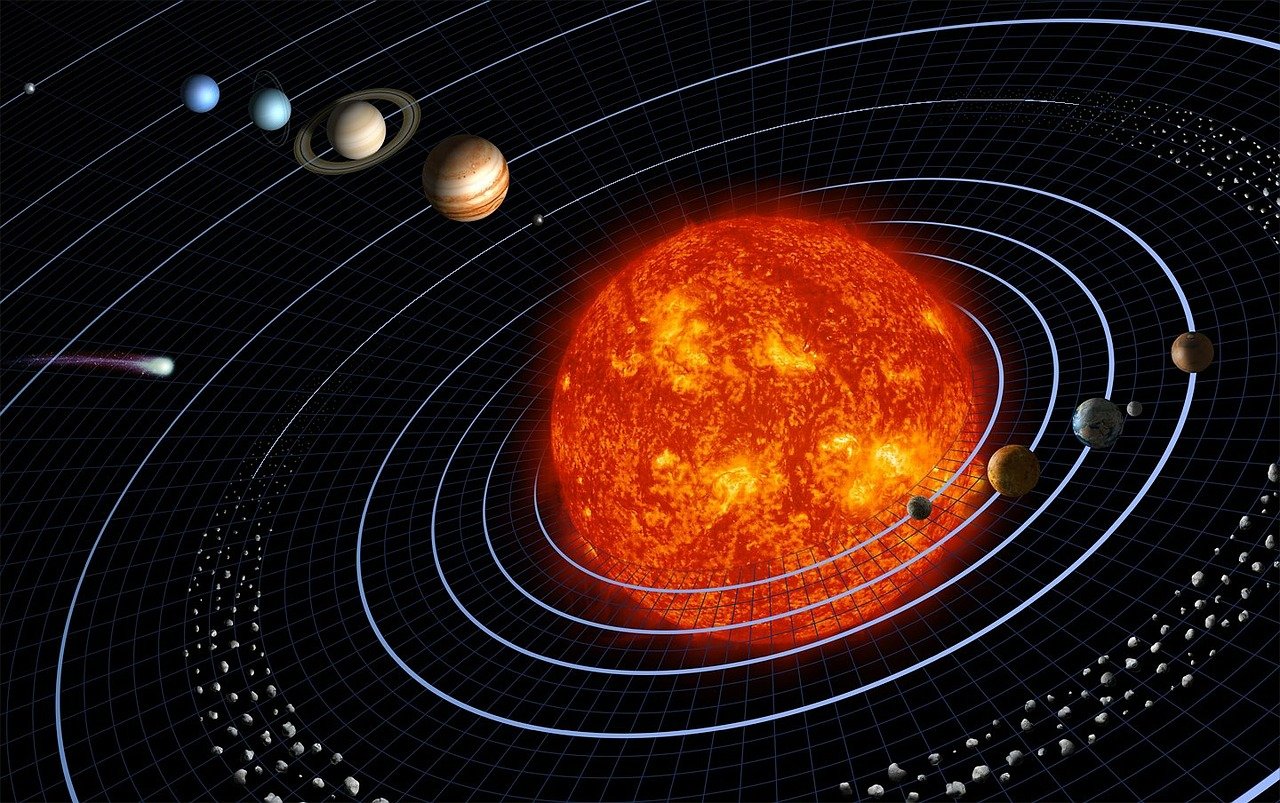NASA sends Lucy to study the Trojans
Travel approximately five times further from the sun than the Earth and you will reach Jupiter’s orbit. Like the other planets, Jupiter traces out a steady circuit around the Sun, completing one lap for every 12 years that pass on Earth. However, the gas giant is not the only object in this particular orbit. There are two large populations of asteroids known as the Trojans which share Jupiter’s path around the Sun, one group leading and one group trailing the planet.
Astronomers have long known about these asteroids and it is believed that they formed from leftover material during the planet formation phase of the solar system. As such, they are expected to consist of primordial debris which, if studied, may yield insight into the earliest days of the solar system.
Most rocky debris of this type was either lost or merged with larger bodies in the early days of the solar system but the Trojans found a stable orbit. They sit approximately the same distance from Jupiter as they do from the Sun. Being just far enough from both Jupiter and the Sun these asteroids are not pulled in by either body and, to put it simply, they are gravitationally balanced in their orbits. It remains to be determined whether or not they formed in these orbits or if they share their composition with Kuiper belt objects and might have been pulled inwards after forming further out.
With all of this in mind, at 5:34 am on 16/10/2021, NASA launched its Lucy probe from Cape Canaveral. This probe has been tasked with the mission of studying the Trojans over the next 12 years. In that time it will carve a path through the solar system and employ several different instruments to complete its mission.
Unlike probes sent to planets such as Mars, Lucy will never settle into orbit around its target. Its trajectory will send it on a complex and looping path utilising gravitational boosts from the planets and the Sun as well as a small amount of propellant. Along this path, Lucy will study eight different asteroids including samples from both the leading and trailing groups of Trojans, as well as one asteroid from the main belt just beyond the orbit of Mars.
It is these readings that astronomers are confident will provide further information about the primordial solar system and the conditions under which the planets formed.
Lucy’s mission will begin by heading out towards the cluster of asteroids leading Jupiter in its orbit. Before it reaches the Trojans, Lucy will investigate a particular asteroid in the main asteroid belt as it passes (expected to occur in 2025). It will then take a further two years of travel time before Lucy reaches the Trojans. Four of the larger asteroids in the leading cluster will be studied before Lucy loops back around to head to the trailing cluster, picking up a gravitational assist from the Earth on the way.
Through the use of cameras, imagers and spectroscopic instrumentation, Lucy will map the surfaces of the asteroids it encounters and also attempt to determine their composition and temperature while highlighting any distinctive surface features. It is these readings that astronomers are confident will provide further information about the primordial solar system and the conditions under which the planets formed. This is a very complex process and even the very best models available struggle to accurately predict the initial conditions of planet formation. Lucy could help to put some of this uncertainty to rest and revolutionise our understanding.
Unfortunately, Lucy ran into early issues. One of the solar arrays failed to deploy properly after the craft was put into orbit. The function of these arrays is to provide a source of power for the craft and its instruments so they are crucial components. However, NASA engineers are hopeful that the disruption will not impact the mission significantly as the power Lucy is currently receiving, even with only one array fully deployed, is close to the expected level.
Lucy’s mission – as currently planned – will last 12 years. In that time, it will become the craft to travel the furthest from the Sun without a nuclear power supply, it will study more objects in unique orbits than any previous mission and, if all goes well, it will provide an insight into the diversity and extreme conditions of the earliest days of the solar system.
Aptly, Lucy is named after some of the oldest fossilised human remains ever to have been discovered. Just as this led us to a better understanding of our time on Earth, the new Lucy may lead us to a better understanding of our planet, its neighbours and their emergence in the solar system.

Comments